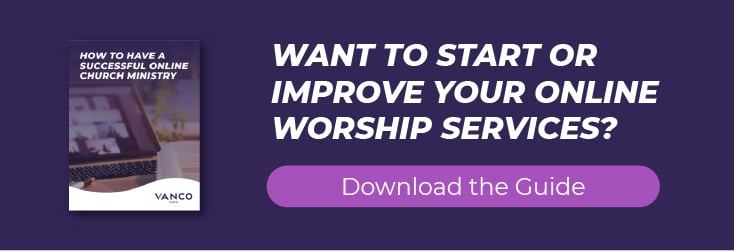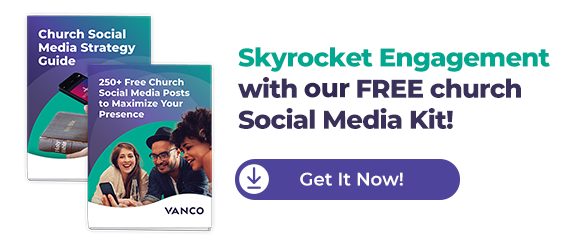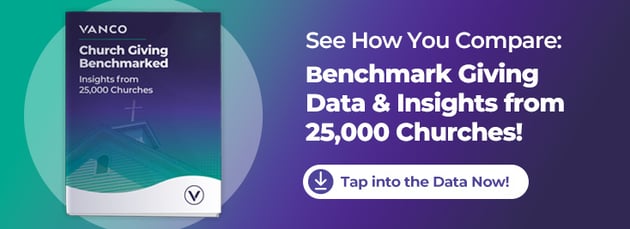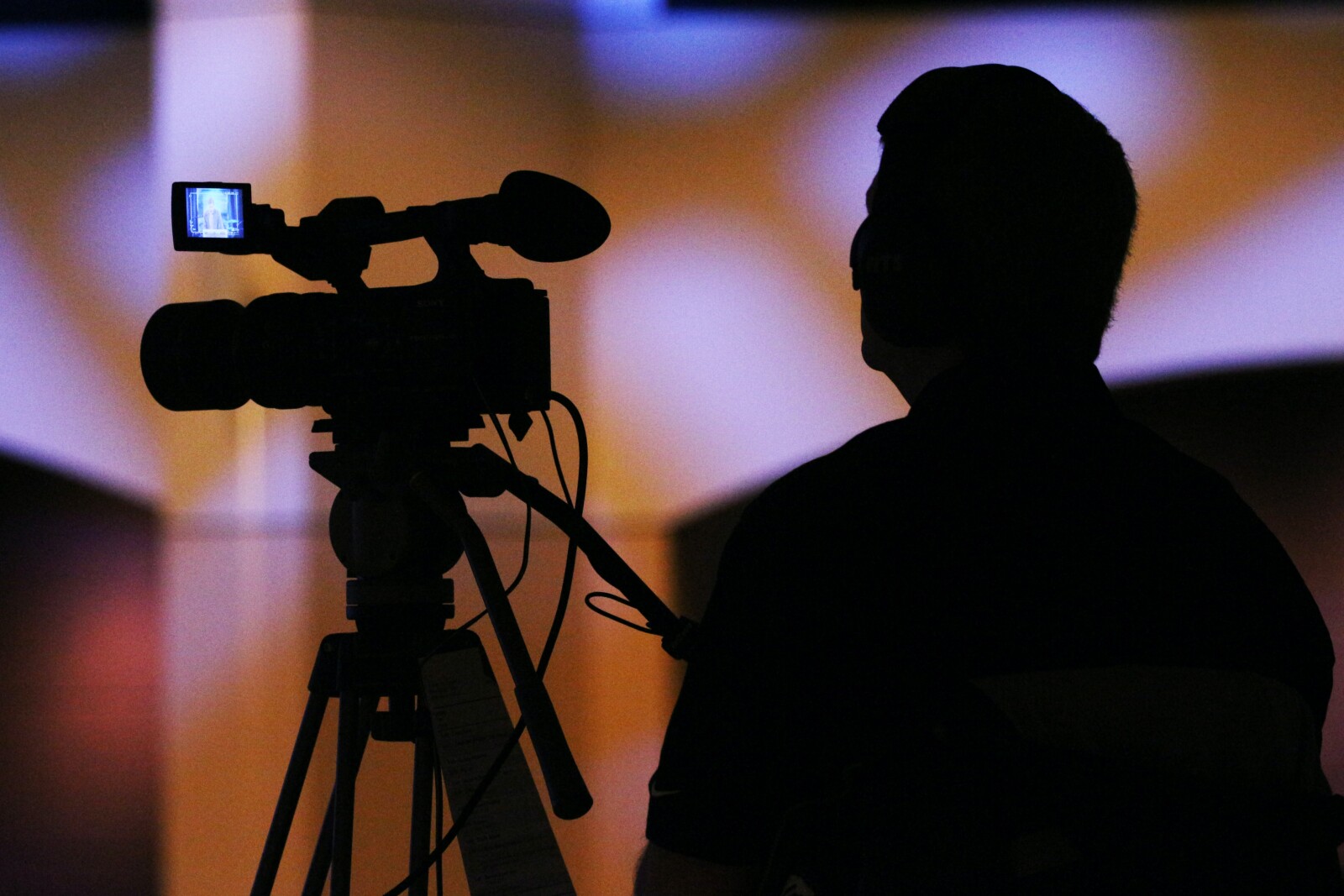
In 2019, one study found that only 22% of churches were streaming their services. This number is significant, but it's not huge. However, when the pandemic hit, livestreaming for churches changed quickly and drastically.
Within a couple of months of the pandemic, around 97 percent of churches were providing some online church services. This change came from necessity, but even with the doors of the physical building reopening, church livestreams have remained. These services provide an avenue for participation for members who can't make it to a physical building.
Is your church looking to get set up or enhance its livestream church service? If so, you need the right streaming equipment and software in place.
The task can feel daunting, but we're here to help. Keep reading to learn more about church video production.
Table of Contents
- Importance of Digital Worship
- The Rise of Livestreaming in Churches
- Choosing the Right Livestreaming Platform
- Setting Up Your Church for Livestreaming
- Engaging Your Online Audience
- Budget Considerations for Livestreaming for Churches
- FAQs
Importance of Digital Worship

Today, digital worship has become more critical than ever before. With people leading increasingly busy lives, attending physical church services may not always be feasible. A church livestream provides a convenient solution for those unable to attend in person, ensuring no one is left behind.
Digital platforms allow churches to reach beyond their local faith communities and connect with worshippers worldwide. This opens up new opportunities for spreading the message of faith and creating a global online community united by shared beliefs.
Digital worship also offers flexibility in terms of timing. Traditional church services are typically held at specific times each week, limiting accessibility for those with conflicting schedules. Livestreaming video allows individuals to participate in services whenever it suits them best, accommodating different time zones and personal commitments.
Another significant advantage of digital worship is its ability to create an inclusive environment. People who might have difficulty physically accessing a church building due to mobility issues or disabilities can now experience the joy of worshipping from the comfort of their homes. It fosters a sense of belonging and ensures that everyone can actively participate in spiritual practices.
Online platforms enable churches to incorporate multimedia elements into their services effortlessly. From inspiring visuals to engaging music performances, livestreaming amplifies the impact of worship by combining audiovisual components that enhance the overall experience.
Ultimately, embracing digital worship enables churches to adapt and evolve with changing technologies and societal trends. By keeping up with modern communication methods like livestreaming and social media engagement, religious institutions stay relevant while building a bridge between traditional values with contemporary practices.
Vanco Live as a Solution
When it comes to enhancing worship with livestreaming, finding the right tools and technology is crucial. That's where Vanco Live comes in. With its robust features and user-friendly interface, Vanco Live is the ideal platform for churches looking to elevate their digital worship experience.
Vanco Live offers a seamless streaming experience that allows churches to connect with their congregations no matter where they are. The platform lets you stream high-quality video and audio, ensuring your worshippers can fully participate in services from their homes.
Vanco Live also stands out as a top choice for churches because of its compatibility with existing streaming tools. You can easily integrate this platform with popular services and continue to promote your church using YouTube or Facebook Live, maximizing your reach and engagement potential.
Setting up your church for livestreaming doesn't have to be complicated. Vanco Live offers guidance on technical setups such as camera selection, lighting techniques and audio equipment recommendations. These resources ensure that you create professional-looking streams without breaking the bank.
Engaging your online audience during virtual services is vital for maintaining an interactive worship environment. With Vanco Live, you can access features like chat rooms and Q&A sessions that encourage participation from viewers near and far.
Want to see how Vanco Live works? Get a demo today!
The Rise of Livestreaming in Churches

Livestreaming has become a game changer for churches around the world, allowing them to reach their congregations in ways they never thought possible. With technological advancements and the increasing need for digital connectivity, livestreaming has quickly gained popularity among churches looking to enhance their worship services.
Statistics on Livestreaming Growth
Statistics show remarkable growth of livestreaming in churches. According to recent research, around 27 percent of regular churchgoers watch religious services online or on TV. This number is only expected to rise as more people discover the convenience and accessibility that livestreaming offers.
In fact, the number of people watching church online consistently has grown from 4 percent to 15 percent.
Around 43 percent of people who attend church online say convenience is a major reason. When they can't get to church, their phones are in the palms of their hands. While some say there's not as much of a connection, others say they do the same things they would at church but at home.
This can include singing along, taking notes and more. However, understanding that the biggest argument against online services is the lack of connection is essential. This helps as you select tools that can address this concern.
How Livestreaming Caters to Various Congregational Needs
One of the key benefits of livestreaming is that it allows churches to extend their reach beyond physical boundaries. By broadcasting services online, they can connect with individuals who may not have transportation access or mobility issues that prevent them from attending in person. This inclusivity ensures that everyone can participate in worship and feel they are part of the church community.
Around 16 percent of people who attend church online state a major reason is that they have a disability or illness that prevents them from attending in person. Another 25 percent say a major reason is they don't want to worry about catching or spreading illnesses.
Additionally, livestreaming provides convenience and flexibility for busy individuals and families. With hectic schedules and competing commitments, many people struggle to make it to every service.
Livestreaming allows busy people to join remotely when they cannot be physically present at church. This flexibility enables more significant engagement with spiritual practices and fosters a sense of connection even when they are physically absent.
Livestreaming also caters to younger generations who prefer digital interactions over traditional methods. Millennials and Gen Z are more likely than previous generations to rely on technology for communication and information. Churches can meet these generational preferences by offering livestreams while maintaining their religious teachings and traditions.
It's important to note mhat the number of Gen Z and millennials regularly attending church is rising. The number of Millennials has increased from 21 to 39%21 percent to 39 percent21 percent to 39 percent.
Finally, during times such as pandemics or extreme weather conditions when physical gatherings may not be possible or safe, livestreaming becomes crucial in ensuring uninterrupted worship experiences for congregants. It provides an alternative means for communities to unite virtually without compromising health or safety.
Choosing the Right Livestreaming Platform

When it comes to livestreaming for churches, choosing the right platform is crucial. With so many options available, it can be overwhelming to determine which one will best meet your needs. Whether you're looking for a free solution or are willing to invest in a paid platform, there are several factors to consider.
Free vs. Paid Platforms
When considering livestreaming, one of the first decisions you'll need to make is whether to go with a free or paid option. Let's take a closer look at the pros and cons of each.
Free Platforms
Free platforms can be tempting because, well, they're free! They often have basic features that allow you to stream your services without any up-front cost. However, there are some downsides to consider:
- Free platforms may limit your streaming quality or impose restrictions on things like storage space or the number of viewers.
- You might also encounter ads that can distract from the worship experience.
Paid Platforms
On the other hand, paid platforms offer more advanced features and customization options:
- With a paid service, you typically have access to higher video quality and reliability.
- These platforms often provide additional tools for engagement with your online audience, such as chat features or interactive elements during live broadcasts.
- Paid platforms also allow for ad-free streaming.
- While investing in a paid platform does require an up-front cost, it can provide long-term benefits for your church community. Paid services usually have dedicated customer support and regular updates that ensure smooth streaming experiences.
If you're already using specific tools for livestreaming in your church setup but want to enhance it with Vanco Live, good news! Vanco Live seamlessly integrates with popular existing streaming solutions.
This means you don't need to start from scratch. Instead, you can enhance your current setup by adding new capabilities through Vanco Live's user-friendly interface.
How to Use Vanco Live With Current Streaming Tools
Vanco Live’s innovative solution seamlessly integrates with your current streaming tools, making it easier than ever to enhance worship experiences.
With Vanco Live, you can effortlessly connect your existing cameras and audio equipment to create a professional-quality livestream. Whether you're using DSLR cameras or handheld camcorders, this platform supports a wide range of devices. Plus, its user-friendly interface makes setup a breeze.
You also don't have to abandon the tools you're already familiar with — simply integrate them into the Vanco Live system for a seamless experience.
To use Vanco Live with your current streaming tools, you only need an internet connection and web access. Once connected, you can easily manage your livestreams during services or events.
In addition, by using Vanco Live alongside your current streaming tools, you can take advantage of additional features such as interactive chats and online giving capabilities. These modern elements help foster connections within your virtual community while maintaining the spirit of traditional worship.
Setting Up Your Church for Livestreaming
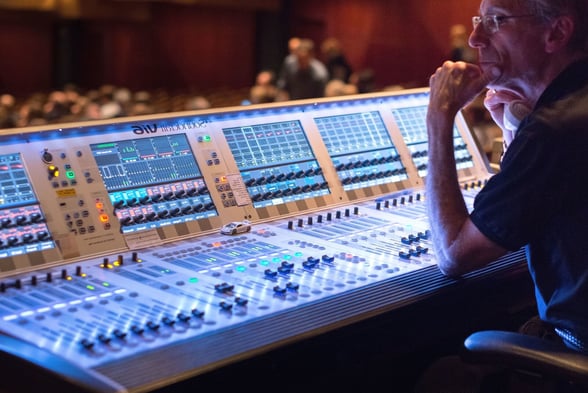
Setting up your church for livestreaming can be an exciting and rewarding endeavor. By bringing your worship services online, you can reach a wider audience and engage with members who may not be able to attend in person. But where do you start?
Technical Setup: Cameras, Lighting and Audio Equipment
Technical considerations play a crucial role when setting up your church for livestreaming. These aspects help to ensure a seamless and immersive worship experience for your online audience.
Cameras
When choosing the right camera for your livestreaming setup, there are several factors to consider. First is image quality. A high-resolution camera will ensure your online viewers can see every service detail.
Additionally, think about the versatility of the camera. Can it capture different angles and zoom in smoothly? This will allow you to provide dynamic shots during worship, capturing both close-ups of speakers and musicians as well as wide-angle views of the congregation.
Lighting
In addition to choosing the right camera, proper lighting is essential for creating an inviting atmosphere during your online services. Good lighting helps ensure viewers can see clearly and feel connected to what's happening on-screen. Consider investing in professional lighting equipment or optimizing natural light sources in your church space.
Audio Equipment
When choosing livestream audio equipment, it's crucial to prioritize clear sound quality and reliable performance.
- Investing in a good microphone ensures your worshippers can hear every word spoken during sermons and musical performances. Consider using either high-quality handheld or lapel microphones for pastors and speakers who move around the stage. This will help eliminate any background noise or distortion that may interfere with the message being conveyed.
- In addition to microphones, having a mixer or soundboard allows you to control and adjust various audio inputs effectively. This ensures that all components of your worship service — music, vocals and speeches — are balanced correctly for optimal listening pleasure.
- Don't forget about monitors! Providing foldback monitors on stage enables musicians and vocalists to hear themselves clearly while performing. This helps them stay in sync with each other and deliver an exceptional worship experience.
Best Practices for Camera Positioning and Stage Setting
Camera positioning and stage setting play a crucial role in creating an engaging and immersive experience for your online audience. Here are some best practices to consider.
Camera Placement
The location of your cameras is critical to capturing the essence of your worship service. Consider placing one camera at the back of the sanctuary for wide-angle shots that showcase the entire congregation. In contrast, you can position another camera closer to the stage for more intimate shots of the speaker and performers.
Other camera tips:
- Place the camera at eye level or slightly above to create a more natural and flattering angle for the presenter or performer.
- Avoid placing the camera too far away, as it can make the subject appear small and distant.
- If possible, use a tripod or stable surface to avoid shaky footage.
- Experiment with different angles and distances to find the most visually appealing shot.
Lighting
Proper lighting is essential for high-quality video production. Make sure to invest in good lighting equipment that highlights key areas, such as the pulpit or choir area, while ensuring balanced illumination throughout the space. This will enhance visual clarity and draw viewers' attention to where it matters most.
Other lighting tips to consider:
- Make sure your subject is well-lit from the front rather than relying on ambient light from behind.
- Use soft lighting sources, such as diffused natural light or a softbox, to avoid harsh shadows.
- Avoid mixing different types of lighting (for example, natural light and fluorescent bulbs), which can create an unbalanced color cast.
Audio Equipment
Clear audio is vital in delivering a seamless livestream experience. Use high-quality microphones strategically placed around your worship space to capture clear sound from both speakers and performers on stage. Test different microphone placements before services to find what works best for optimal audio quality.
Stage Design
Onstage, create an aesthetically pleasing backdrop that reflects your church's identity and enhances worship experiences through visual elements. This could include banners, artwork or projections displaying scripture verses or lyrics during singing portions of your service.
Tips to consider for your stage background:
- Choose a clean and visually appealing background that complements your subject.
- Avoid busy or cluttered backgrounds or anything else in the background that can be distracting.
- Consider using a backdrop or green screen for a professional-looking background if your stage setting is limited.
Stage Presence
Encourage speakers and performers onstage to engage directly with both physical attendees and virtual participants. They can do this by looking into cameras occasionally rather than solely focusing on those present physically. This creates a sense of connection with online viewers.
Where people stand on stage matters as well. Keep the following tips in mind:
- Encourage presenters to maintain a central position on stage, making it easier for cameras to capture their movements.
- Avoid blocking the view of other performers or speakers on stage, especially during musical performances.
- Consider using handheld microphones for more mobility and flexibility.
Finally, create a clear separation between the subject and their surroundings. For example, use a stage or platform to elevate the subject and make them stand out.
Engaging Your Online Audience

Reaching and engaging with your online audience is more important than ever. With the rise of livestreaming in churches, you have a unique opportunity to connect with individuals who may not be able to attend in-person services. Here are some strategies for enhancing engagement with your online audience.
Strategies for Interactive Sermons and Services
Here are some strategies to make your digital congregation feel connected and actively participate.
Encourage Real-Time Comments
Encourage viewers to participate by asking questions or sharing their thoughts in the comments section (or the Vanco Live chat feature). This can create a sense of community and involvement, even from afar. Responding to these comments in real time can help create a sense of community and engagement.
Incorporate Polls and Surveys
Use interactive tools like polls and surveys during your livestream to gather feedback from your online congregation. This encourages participation and provides valuable insights into what resonates with them.
Interactive Q&A Sessions
Set aside dedicated time during or after the sermon for an interactive Q&A session. Allow viewers to submit their questions through the chat feature or via email. Addressing these questions directly helps foster dialogue between the pastor/minister and the online attendees.
Virtual Prayer Requests
Create a designated space on your church's website or social media platforms where members can submit prayer requests virtually. During the livestream, acknowledge these requests by praying for them aloud, making everyone feel included in this vital aspect of worship.
Connect Through Social Media Groups
Establish online groups on platforms like Facebook specifically for members of your church community who engage with your livestreams regularly. These groups provide an opportunity for ongoing conversations, sharing resources, organizing virtual events and fostering deeper connections among members.
Additional Virtual Fellowship Opportunities
Consider hosting virtual small group discussions, Bible studies or even coffee chats via video platforms like Zoom following the livestream service each week, month or year (depending on frequency). This allows people to connect more intimately with one another while still maintaining physical distance.
Incorporate Visuals
Another way to engage your online audience is by using visuals. Incorporate images or videos that complement your message and help capture attention. Visual aids can enhance understanding and keep viewers engaged throughout the service.
Promptly Respond to Comments and Messages
Make sure you respond promptly to comments and messages that are posted during livestreams. Acknowledge individuals by name when possible. This personal touch goes a long way toward building relationships with your virtual audience.
Keep Up the Effort
Remember that engaging your online audience requires consistent effort over time. Continuously seek feedback on what aspects resonate most with them and adjust accordingly. Building strong connections will take time but will ultimately deepen their relationships with you as a pastor, minister or leader and with the church as a whole.
Encouraging Member Engagement and Online Giving With Vanco Live
With Vanco Live, you can create an interactive experience that keeps members connected and involved.
One strategy for increasing engagement is through interactive sermons and services. Encourage viewers to participate by asking questions or sharing their thoughts in real-time chat features. This fosters a sense of community and allows members to feel like active participants in worship.
Another way to enhance member engagement is through online giving with Vanco Live. Integrating this feature into your livestream makes it easy for members to support the church financially, even when they can't physically attend services. Whether it's tithes or donations, Vanco Live provides a seamless platform that enables secure and convenient transactions.
Don't forget about social media integration! You can use Facebook Live ideas or YouTube Live ideas for engagement alongside Vanco Live so you can reach a wider audience beyond just your website visitors. By using these popular channels, you increase visibility and attract new viewers who may be searching specifically for religious content.
Budget Considerations for Livestreaming for Churches

Budget is an important factor to consider in livestreaming for your church. You want to strike a balance between quality and cost-effectiveness to ensure that your worship services reach as many people as possible.
Balancing Quality With Budget
Balancing quality with budget is crucial when setting up livestreaming for your church. While delivering high-quality content is important, staying within your financial means is equally essential. Here are some tips on how you can achieve this delicate balance.
Prioritize the Essentials
Invest in good quality equipment that will ensure clear audio and video transmission. This may include:
- High-resolution camera(s)
- Professional microphones
- Suitable lighting fixtures
By allocating your budget wisely to these key elements, you can enhance the overall production value of your livestream without overspending.
Explore Free or Low-Cost Options
Another way to optimize your budget is by exploring free or low-cost livestreaming platforms. Some platforms offer free basic features, which can be sufficient for smaller churches or those just starting out with online worship services. However, keep in mind that paid platforms often provide more advanced capabilities and technical support.
Leverage Existing Resources in Your Church Community
If you have members who are skilled in videography or tech-savvy individuals who can assist with the setup process, tap into their expertise instead of outsourcing these tasks. This saves money and fosters a sense of involvement and ownership among congregation members.
Make Adjustments as Needed
To maintain a balance between quality and budget constraints, periodically assess the effectiveness of your current setup and make necessary adjustments along the way. Monitor feedback from viewers and evaluate if any upgrades or changes are required based on their experience.
Remember that providing an engaging online worship experience doesn't solely rely on expensive equipment or fancy technology; it's about creating meaningful connections with your virtual audience through heartfelt sermons and interactive elements like Q&A sessions and/or prayer requests during livestreams.
Ultimately, the goal is to strike a balance where both technical excellence and financial prudence coexist harmoniously throughout every step of implementing livestreaming for churches. And by carefully managing resources while maintaining an unwavering focus on enhancing worship experiences, it's possible to create impactful digital services without breaking the bank.
Investing in Equipment and Platforms
As we wrap up this discussion on enhancing worship with livestreaming for churches, let's take a moment to reflect on why investing in equipment and platforms for livestreaming is so essential. With the rapid growth of digital worship and the increasing demand for online engagement, having reliable tools at your disposal can make all the difference in reaching and connecting with your congregation.
- Investing in quality equipment such as cameras, lighting and audio gear ensures your livestreams are visually appealing and professionally presented. This enhances the overall experience for those tuning in from home, making them feel more connected to your services.
- In addition to equipment, choosing the right livestreaming platform is crucial. Platforms like Vanco Live offer a seamless user experience with interactive features that encourage viewer engagement.
- In addition, investing time and resources in livestreaming demonstrates your commitment to meeting congregational needs by offering flexible options for worship participation. It shows that you value inclusivity by providing access for those who may be unable to attend services in person due to various circumstances or geographical limitations.
Embracing livestreaming technology opens doors beyond just Sunday services. You can expand outreach efforts through additional virtual fellowship opportunities such as Bible studies or small group meetings via video conferencing.
So why should you invest? Because embracing livestreaming technology allows you to reach a wider audience while fostering meaningful connections within your congregation. It enables worshippers near and far to engage with your church community in a whole new way.
FAQs
We understand that there are a lot of questions when it comes to livestreaming. Here are answers to some frequently asked questions to help guide your journey.
What are the benefits of livestreaming for churches?
Livestreaming has become an increasingly popular tool for churches to enhance the worship experience. There are numerous benefits that come with incorporating livestreaming into your church's services, such as:
- It allows you to reach a wider audience. With livestreaming, people worldwide can tune in and participate in your services, regardless of location.
- Livestreaming provides a convenient option for those who cannot physically attend church for various reasons such as illness or travel commitments. It ensures that everyone can still feel connected and engaged with the community even when they cannot be present in person.
- Livestreaming enables churches to increase member engagement. By offering virtual participation options such as interactive sermons or real-time chat features, viewers can actively engage with the service and connect with other members online.
- Another significant benefit of livestreaming is its ability to facilitate online giving. With platforms like Vanco Live, churches can integrate donation capabilities directly into their livestreams, making it easy for viewers to contribute financially if they wish.
- Finally, livestreaming allows churches to preserve and share their worship experiences beyond just one service. Recordings of streamed services can be archived and made available in the form of on-demand video so people can access them at any time, providing a valuable resource for future reference or personal reflection.
Embracing technology through livestreaming demonstrates adaptability and innovation within the church community. It shows that your church is willing to use modern tools to meet congregants' evolving needs and create meaningful connections inside and outside traditional walls. 
How does Vanco Live integrate with existing streaming platforms?
Vanco Live is an excellent solution for churches looking to enhance their worship experiences through livestreaming. One of the key advantages of Vanco Live is its seamless integration with existing streaming platforms. Vanco Live can easily integrate these services whether your church uses YouTube, Facebook Live or another popular platform.
Integrating Vanco Live with your existing streaming platform is a simple process that requires minimal effort and technical know-how. When you sign up for Vanco Live, you will receive step-by-step instructions on how to connect it to your preferred streaming platform.
With Vanco Live integrated into your current setup, you can take advantage of its powerful features:
- You can use the built-in donation tools to enable online giving during livestreams directly from your website or social media platforms. This makes it easy for members and attendees to contribute financially even when they are not physically present in the church.
- In addition to online giving capabilities, Vanco Live also offers interactive features that engage and involve your online audience. Viewers can participate in real-time discussions during sermons and services through the chat function. This fosters a sense of community among virtual attendees and allows them to feel connected despite being physically distant.
What are the cost considerations for setting up livestreaming?
When considering the cost of setting up livestreaming for your church, weighing the benefits against your budget is important. While there are expenses involved, the potential reach and impact of digital worship can make it a worthwhile investment.
- First, you'll need to consider the equipment needed for livestreaming. This includes cameras, lighting equipment and audio gear. Depending on your needs and preferences, these costs can vary greatly. However, starting with basic equipment and upgrading as your resources allow is possible.
- In addition to the hardware costs, you'll also need to factor in the cost of a livestreaming platform or service. There are both free and paid options available. Free platforms may have limitations on features or quality but can still be a good starting point if budget is a concern. Paid platforms often offer more advanced features and customization options.
- Another cost consideration is ongoing maintenance and support for your livestreaming setup. This may include software updates, troubleshooting technical issues or training volunteers who will operate the equipment. It's important to allocate resources for these aspects to ensure the smooth operation of your online services.
It's worth noting that while there are initial costs involved in setting up livestreaming for churches, this investment can lead to long-term benefits such as increased engagement from congregation members near and far. Additionally, having an online presence enables greater accessibility and inclusivity within your community.
Can livestreaming services reach older church members effectively?
With the growing popularity of livestreaming in churches, many wonder if this digital approach can effectively reach older church members. The answer is a resounding yes! Streaming services have proven to be an inclusive and accessible way to engage all members of the congregation, regardless of age.
- Around 79 percent of people over 65 believe livestreaming is an acceptable way to engage with the church when they are sick or caring for someone who is sick.
- Livestreaming allows older church members who may have mobility issues or are unable to attend in-person services to participate and feel connected. They can join in from the comfort of their own homes and experience the worship service alongside their fellow congregants.
- Livestreaming also provides flexibility for older churchgoers who may prefer a quieter environment or have difficulty with crowded spaces. They can choose when and where they want to watch services, allowing them to fully engage with the content without distractions.
- Additionally, livestreaming offers features that cater specifically to older individuals. Closed captioning options make it easier for those with hearing impairments to follow along with sermons and hymns. This ensures that everyone has equal access to spiritual guidance and teachings.
- Finally, integrating online giving platforms like Vanco Live makes it convenient for older church members to contribute financially even if they cannot physically attend services. With just a few clicks, they can support their local parish from anywhere at any time.
How can a church get started with livestreaming?
Getting started with livestreaming for your church is easier than you might think. Here are some steps to help you get started:
- Assess your needs.
- Choose the right equipment.
- Set up your streaming platform.
- Test and optimize your system.
- Promote your livestreams.
- Engage with viewers during virtual services.
- Monitor feedback and make adjustments.
- Encourage online giving.
Remember that starting small with livestreaming for churches is perfectly fine, even if you don't have all the fancy equipment at first! The most important thing is delivering meaningful worship experiences through effective livestreaming technology, while actively engaging both remote attendees and those present in the physical congregation.




